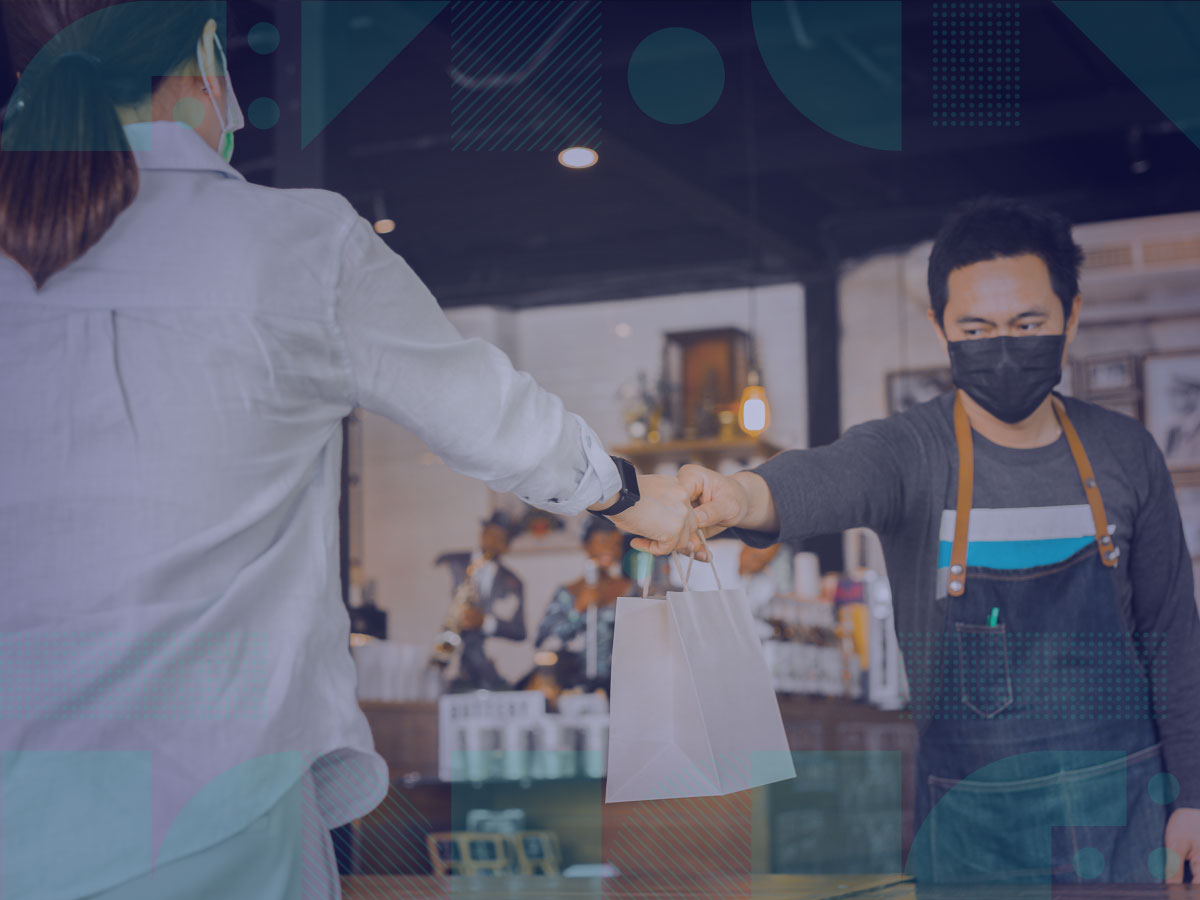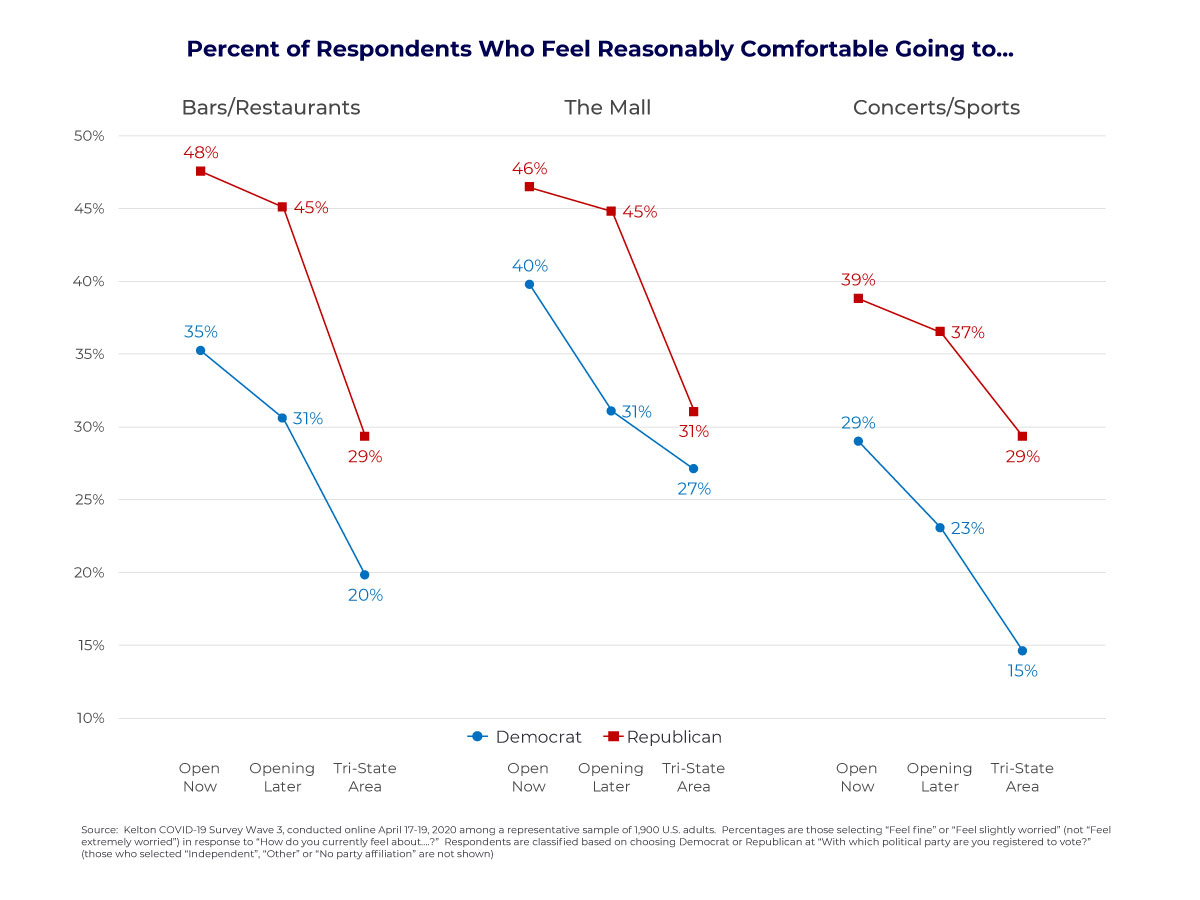

Businesses affected by COVID-19 want to know when and where consumer activity will pick back up so they can focus their marketing, operations, and research appropriately. Which physical locations should they focus on reopening and with how much capacity? Where should they continue to concentrate their e-commerce efforts and quarantine-based messaging?
Executives can’t simply trust their guts to make these decisions. After all, their personal pandemic experiences aren’t necessarily shared by other geographies or tribes. At the same time, businesses can’t rely only on publicly available data that may not necessarily reflect their specific target audiences. Brands and businesses instead need to invest in customized research- and data-driven initiatives to drive marketing and strategy decisions now more than ever. The implications are not just about “when” and “where” to reopen businesses; they’re also about “how.”
Just as the country and consumers reacted to the spread of the virus at different rates, so, too, are they reacting differently to the flattening of the national curve. They’re reopening businesses and resuming consumer activity at different rates:

And those reopening decisions are not always correlated to their local curves. As researchers, we believe in science and statistics and trust solid models to predict the future. But as insights professionals, we also understand that decision making is often non-conscious or subject to cognitive biases. We also know that most markets are segmented, with different people prioritizing different criteria when making their choices. This explains why the reopening strategies are strongly correlated with the political affiliation of states and their leadership. To illustrate, Republican governors represent 89% of the population living in states already open and just 25% of the those who are still under restrictions.
Just because a state relaxes restrictions, that doesn’t mean consumers in those states will flip a switch and resume life exactly the way it was. While some people are chomping at the bit to attend concerts and sporting events, others are still afraid to visit the mall, let alone sit arm’s length away from their stylists – mask or no mask.
And just because stores and restaurants start to reopen, that doesn’t necessarily mean that business will pick up. It depends on the mindset of consumers, the degree to which they fear for their safety or believe that social distancing is the right thing to do, offset by the value they place on personal determination and the pull of social interaction.
In mid-April, our sister company Kelton Global asked “how much longer do you think you can remain at home before it starts affecting you in a drastically negative way (e.g., physically, emotionally, mentally)?” At the time, 47% of those in already-open states gave it no more than a month, compared to a slightly lower 41% of the Tri-State Area losing patience that fast.
People in the now-open states are more comfortable in public than those in other states, but within each stage of reopening, Republicans are quite a bit more comfortable with public activities than Democrats are.

Some of the short-term marketing implications are becoming clear: personalized advertising should combine geolocation and political orientation to increase effectiveness. More specifically, brands should consider targeting stay-at-home oriented messaging toward Democrats, while themes around reopening may resonate more with Republicans. The situation is fluid, however, so stay tuned in to both Liberal and Conservative media to keep a pulse on both audiences.
Brands should also consider focusing their messages around certain behaviors and activities that people miss most during extended quarantine. For example, Kelton Global found that 61% of survey respondents missed visiting the home of a friend/family member “a lot” or “intensely.” If you are not lucky enough to be a video conferencing platform substituting for this activity in the meantime, you should consider whether your product or service can be promoted as a “hostess gift” or “house reopening gift” for when those in-person visits finally do occur.
Kelton’s survey also found that half of respondents missed going to a bar or restaurant. Since so many restaurants have offered delivery/take-out during this time, it’s clearly the experience (service, ambience, or social interaction) that people really miss. Think about how you can promote and enhance each of these while still addressing people’s need to feel safe, as 63% of those who miss this experience are also “extremely worried” about engaging in the same activity.
Finally, despite the impression given by highly visible protesters, the majority of American consumers remain “extremely worried” about many different types of public consumer activity. Given this reality, and the uncertainties that will continue to impact society for the next several months, businesses should frame their decisions with a sober understanding that the consumer economy is not likely to come roaring back any time soon. Still, by teasing out bright spots in the data, brands can adapt their marketing strategies on the fly and hasten their recovery.
You must be logged in to post a comment.